Bind som Barry Ord Clarke

I FiNs serie »Världens Flugbindare« träffar Markus Hoffman den mycket kände flugbindaren Barry Ord Clark, född i England men som bor sedan många år i Norge. I FiN nr 2 2020 får du träffa honom och här får du lära dig hans speciella parachute-tekniken genom en step-by-step-presentation.
Tips och Trix av Barry Ord Clarke
Clarke’s CDC Para weld mayfly
Krok: Valfri
Bindtråd: Valfri
Stjärt: Coq de Leon eller annat stjärtmaterial
Post: Polygarn
Kropp: Påfågelquill eller dubbing.
Thorax: Dubbing eller påfågelherl.
Hackel: En eller flera CdC-fjädrar
Här får du Barrys beskrivning på hans modersmål engelska.

1. Secure your dry fly hook in the vice, as shown, with the hook shank horizontal.

2. Run a fine foundation of tying thread along the hook shank.

3. Select a nicely marked Coq de Leon hackle for the tail fibres.

4. Take a small bunch of Coq de Leon fibres for tail and tie in on top of the hook shank. This is important to allow the hook bend to sink under the surface! The tail should be approximately the same length as the hook shank.

5. Take a 10 cm length of your selected colour of polypropylene yarn you wish to use for the post weld, as shown.
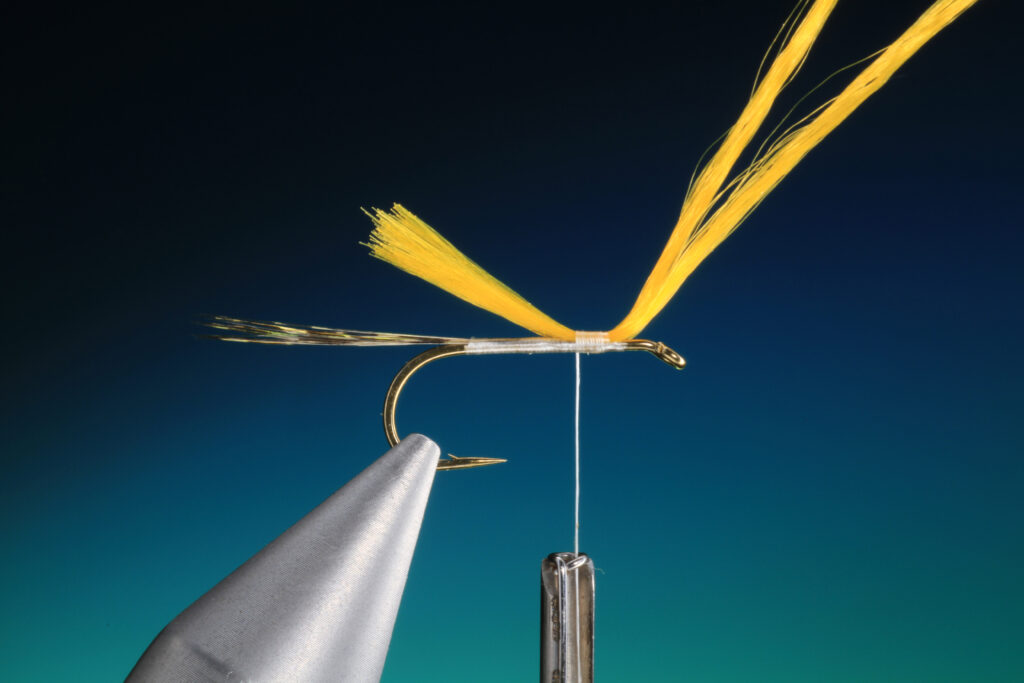
6.Tie in the Poly loop at the correct position for the post.Make sure that you have enough poly yarn at the rear of the post to hold.

7. Trim off the ends of the poly yarn at a slight angle, so when covered with tying thread they will enable a tapered body.

8. Even the body with tying thread to a slight taper.
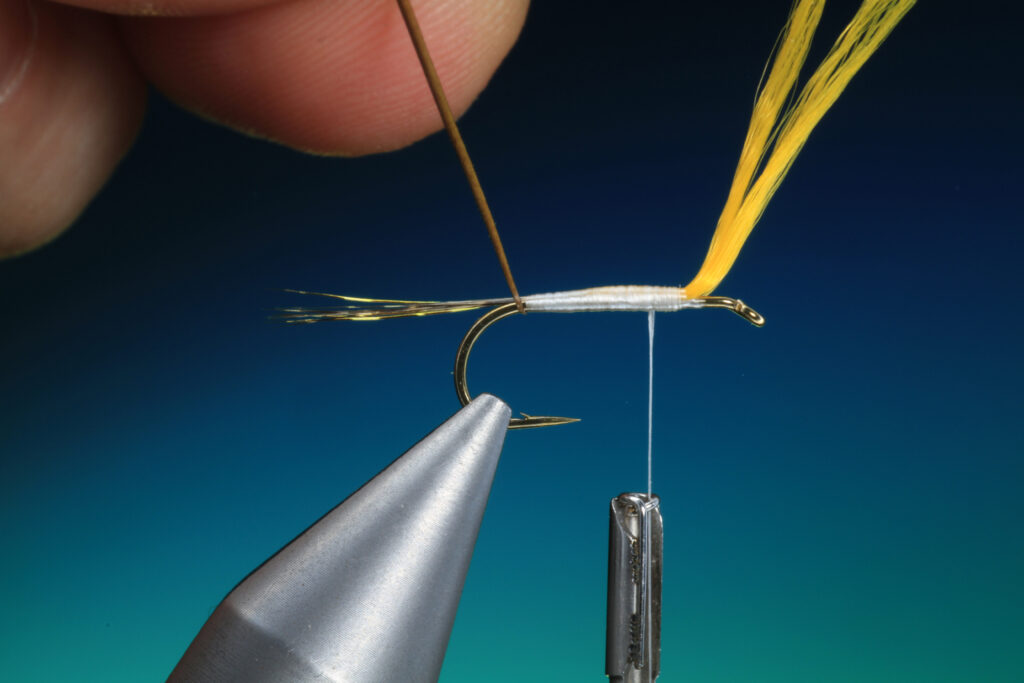
9. Select your desired colour of stripped quill.Tie in a stripped quill, by the thinest end, at the base of the tail ready for wrapping.

10. If you would like to to make the quill body a little more robust give the underbody a fine coat with varnish or super glue, before you wrap the quill.
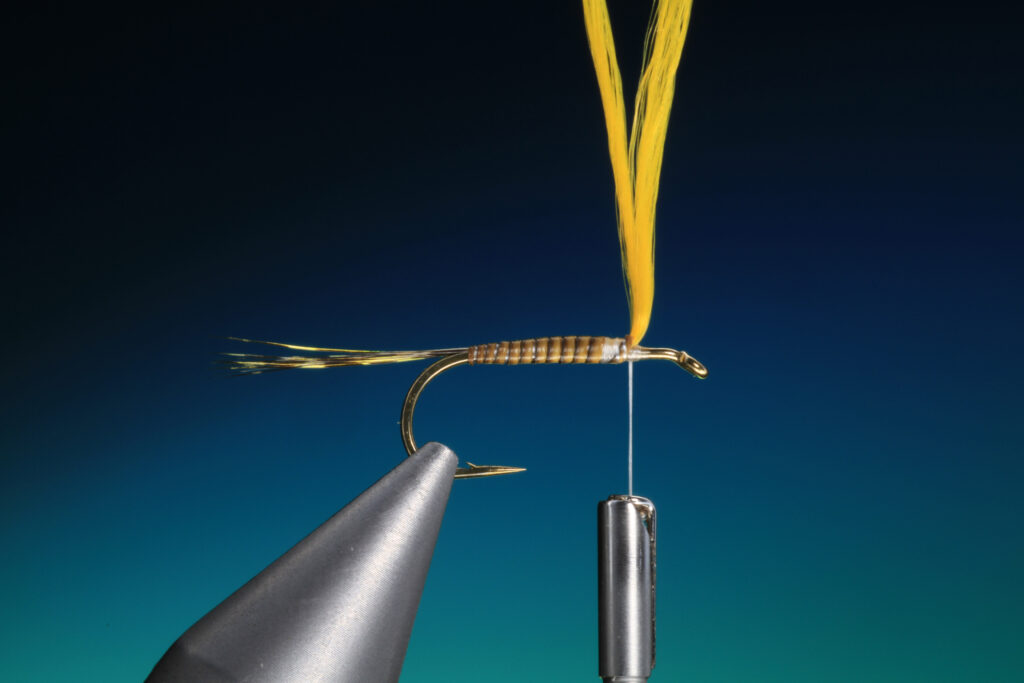
11. Wrap the quill in even neat tight turns all the way up to the thorax.Tie off.

12. If desired, use a dubbing needle to apply only a thin coat of UV resin, to protect the quill.
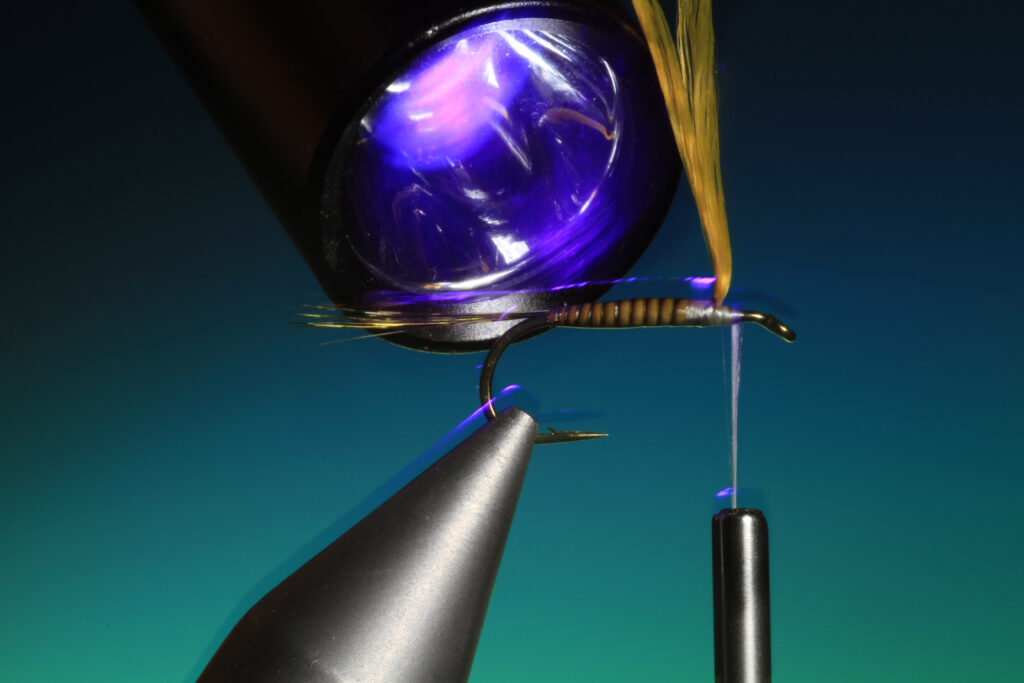
13. Give the UV resin a blast with your UV light to cure it.

14. Select a nice long peacock herl and tie this in at the rear of the thorax.

15. At the base of the post, make a 12 cm long dubbing loop. Then run your tying thread forward to the hook eye.
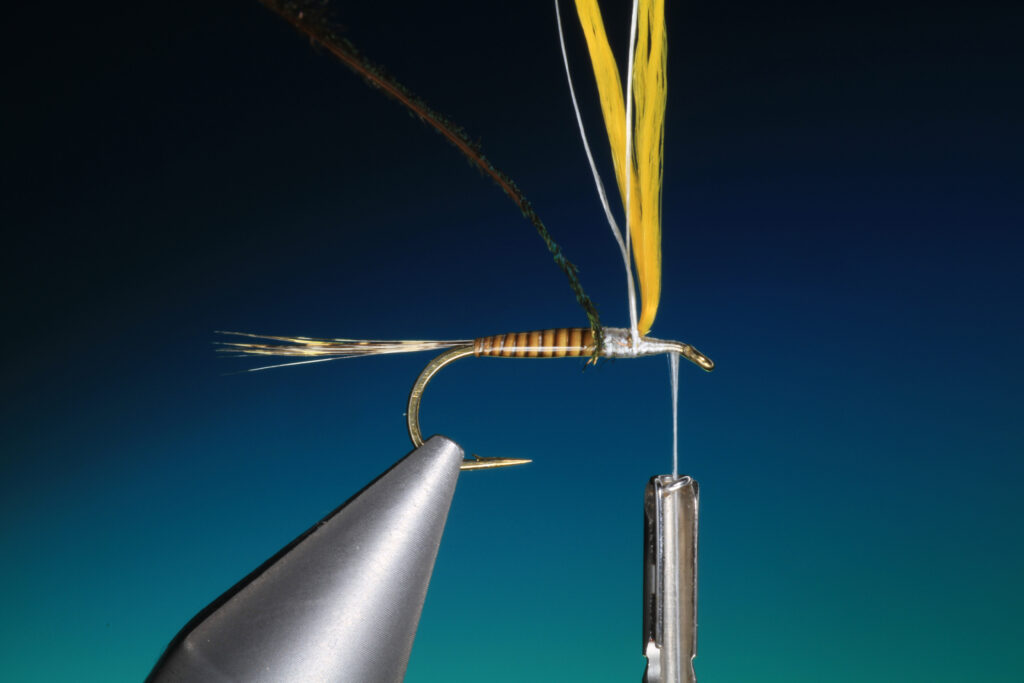
16.Hold the dubbing loop up with the post before you wrap your peacock herl.

17. Now wrap your peacock herl over the thorax and tie off behind the hook eye.

18. Select two long CDC hackles in the wing colour desired.

19. Place the CDC in a Magic Clip.
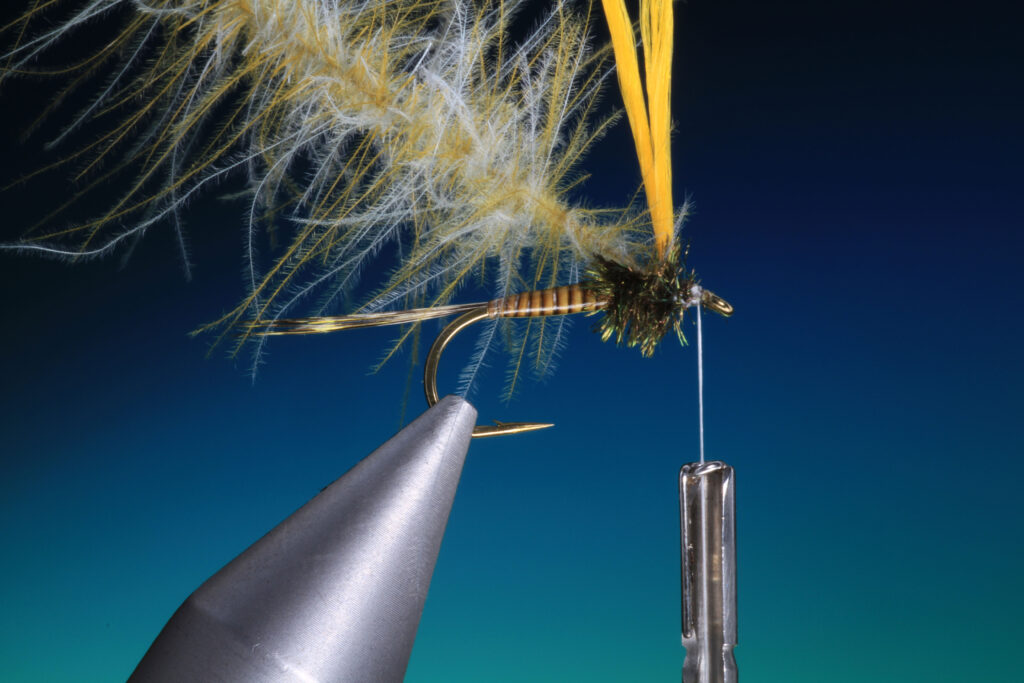
20. Now spin the CDC in the dubbing loop to form a CDC hackle.

21. Now wrap about half the CdC dubbing brush up the poly post. If you have a gallows tool to hold the post in position you may find this helpful.

22. Once you have wound the CdC dubbing brush half way up the post, wind it down again into the thorax as shown.

23. Now holding all the CdC away from the hook eye, bring the remainder of the dubbing loop round and over the hook eye and secure with a couple of loose turns of tying thread. Once held in position, pull the remainder of the dubbing loop tight to straighten up the wing.
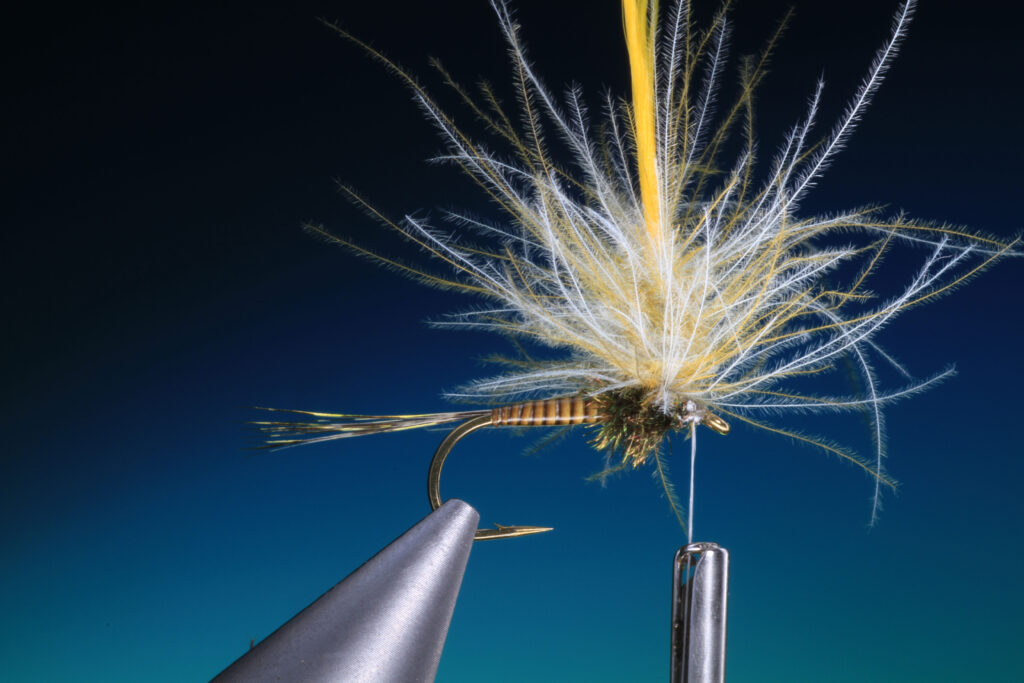
24. Once tight trim off the excess dubbing loop, tie off and whip finish.

25. Remove your tying thread. Now while holding the poly post in one hand, push down the CdC fibres so that the are more compact and closer to the thorax. Here I am using the notch on a Petitjean stacker tool to do this.

26. Once the CdC para hackle is in position, trim off the poly post about 1 cm above the hackle.
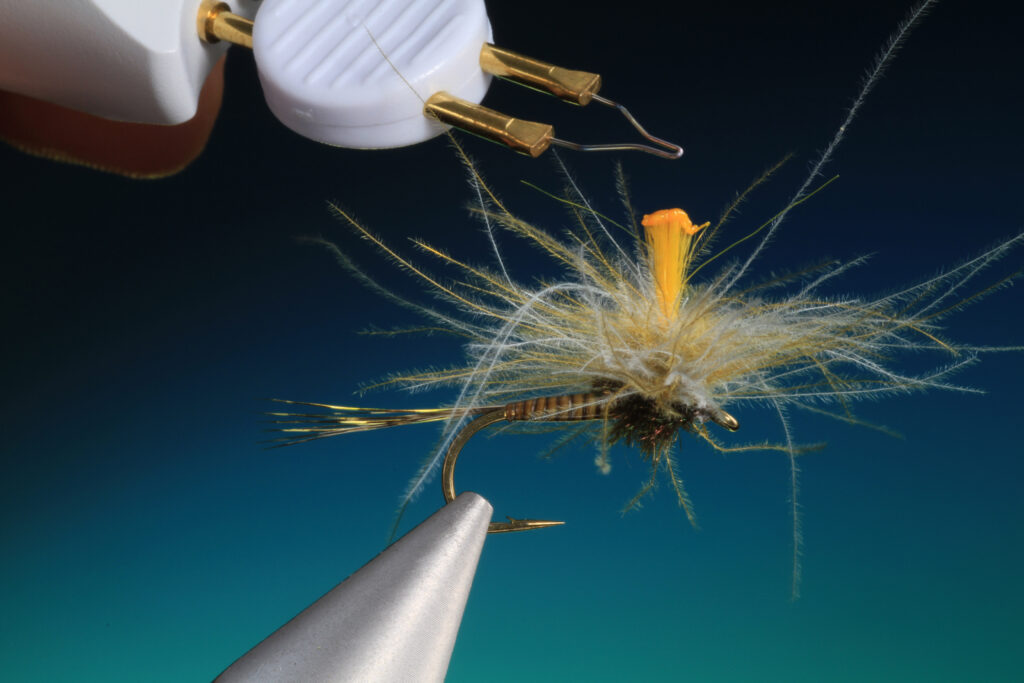
27. Now take a cauterising tool and carefully melt the poly post gradually down into the CdC hackle. Take your time with this and try not to burn it. You can if care is taken also use a lighter.

28. Once melted correctly the poly yarn will weld the hackle in place and form a neat even bead, on top of the hackle centre.

29. Now with your right hand, push all the CdC fibres trapped between your finger and thumb upwards. Once you have them in the correct position, trim off the CdC ends.
30. Once done, the hackle will fall back into position when released. Now the hackle should be the correct diameter and even all they way round.
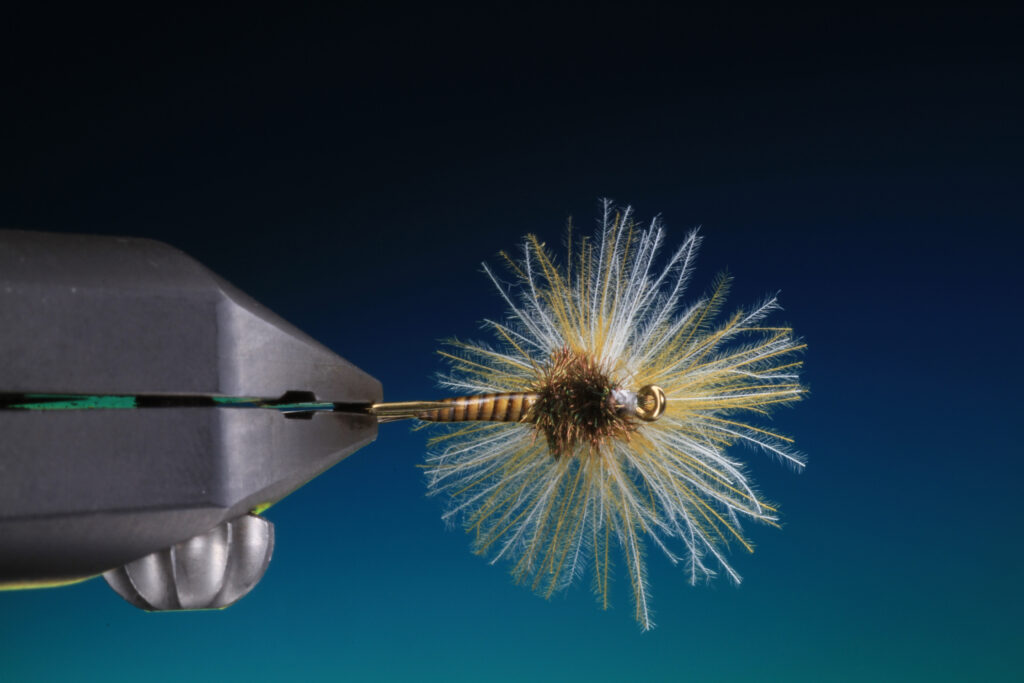
31. View from below with the uninterrupted abdomen and thorax.
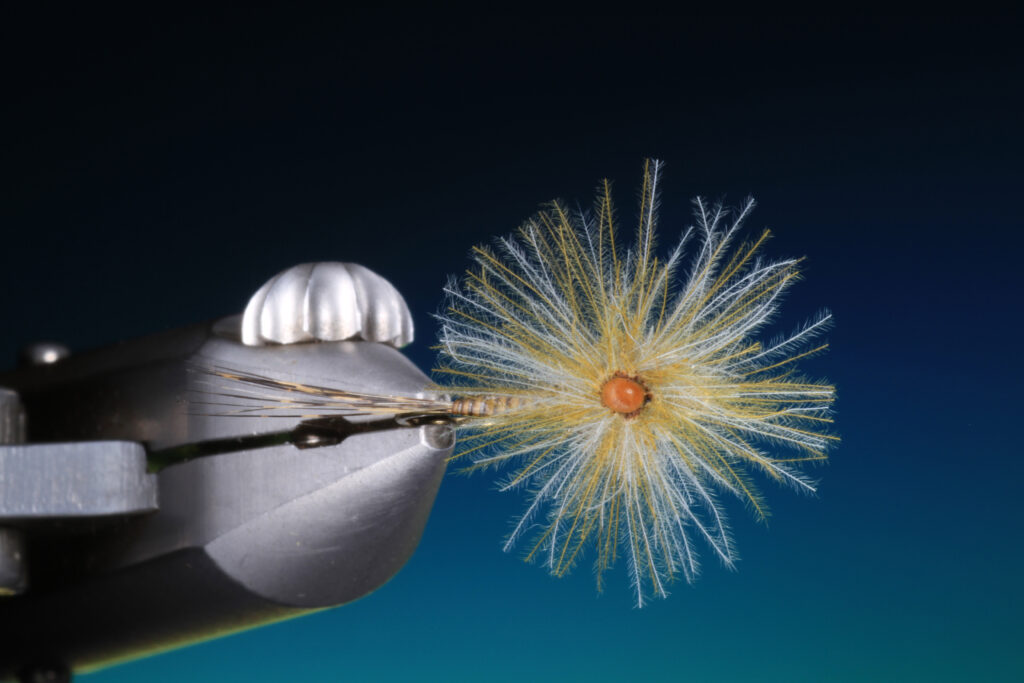
32.The finished para weld and quick sight poly bead on top.
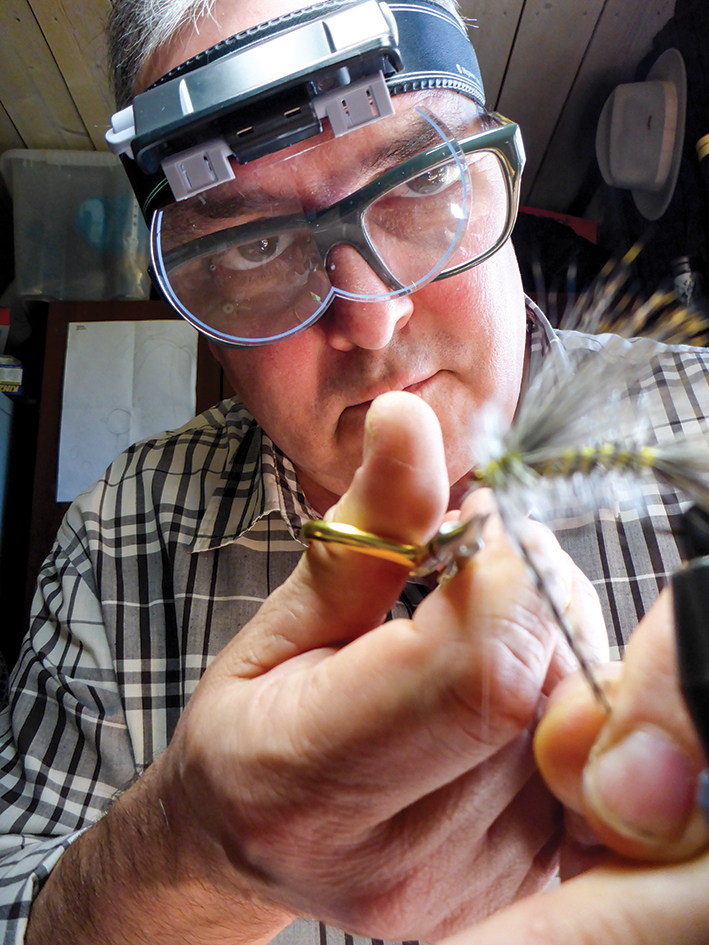
Böcker av och med Barry Ord Clarke
• International guide to fly tying materials 1994: Barry Ord Clarke & Robert Spaight.
• Salt water fly fishing in Northern Europe 1996: Paul Morgan & Friends.
• Scandinavian Fly Tyers 1996: Barry Ord Clarke & Jon Lænes.
• Fliegenbinden 48 Munster vom Meister 2006: (48 patterns from the master) Barry Ord Clarke.
• Fluemønster lexicon (Fly pattern lexicon)2008: Barry Ord Clarke & Lars Lenth.
• Fluebinderens Bible Ørretfluer 2010: Barry Ord Clarke.
• Flies for sea-trout Rivers 2012: Barry Ord Clarke.
• Flies for Pike 2012: Barry Ord Clarke.
• Flies for sea-trout Saltwater 2012: Barry Ord Clarke.
• Fluebinderens Bible Sjøørretfluer 2015: Barry Ord Clarke.
• Petitjean CDC 2018: Marc Petitjean & Barry Ord Clarke.
• The feather Benders Fly Tying Techniques 2019: Barry Ord Clarke.
• Fly Tying a beginners guide ( publiceras hösten 2021) Barry Ord Clarke
Barry håller som bäst på att färdigställa ett omfattande projekt vid namn »The Ultimate guide to tying and techniques with deer hair«.
Vill du lära dig mer av Barry Ord Clarke

